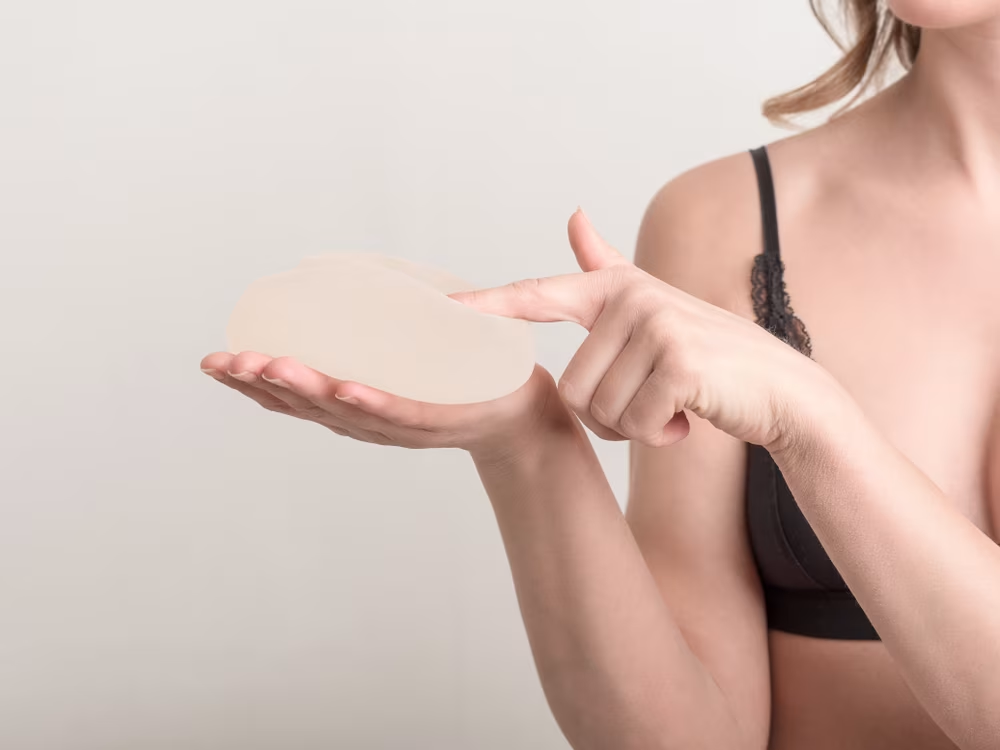
Plenty of people look back on the choices they made two, five, or 10 years ago and ask themselves what they were thinking. In some cases, the impact of the decision isn’t long-lasting. A bad haircut will go away in a few months, only remaining in photos. Other choices do stick around and might require more effort to change.
For many women, the decision to get breast implants is a carefully considered one. Still, it might be that years later, you realize that you no longer like your implants or that they interfere with your day-to-day life. Fortunately, breast implant removal is relatively common plastic surgery.
If you’re considering implant removal or replacement, here’s what you need to know first.
1. Women Choose to Remove Their Breast Implants for a Variety of Reasons
There are as many reasons for wanting to remove breast implants as there are for getting implants in the first place. Some women choose to have their implants taken out because they no longer like the look of larger breasts.
Others choose to remove their current implants and replace them with a different pair. The new implants might be smaller or larger than the previous ones. They might also be made from a different material. For example, a woman who had saline implants might switch to silicone ones. It could also be the case that a woman upgrades her implants, replacing an older pair of silicone implants for a new pair.
In a few cases, an issue with the current implant or implants might lead to a woman deciding to remove them.
An implant can rupture or leak, meaning the best option is to take it out.Another issue that can develop is capsular contracture. During capsular contracture, scar tissue that forms around the implant tightens and squeezes it. At first, the issue might not be painful or cause any issues. If it advances, the scar tissue can become painful or can deform the breasts.
2. You Might Want to Have a Breast Lift
Some women realize that what they want isn’t larger breasts, but breasts that are more elevated and perky. Over the years, your breasts are likely to change in size and shape, whether you have implants or not. Some milestone events, such as giving birth or breastfeeding, can contribute to the changes that occur in the breasts.
For example, it’s fairly common for women to develop breasts that look deflated or droopy after breastfeeding, with or without implants. If you’re concerned about changes in the shape of your breasts over time, it can be worthwhile to discuss the possibility of a breast lift with your plastic surgeon.
Your surgeon might recommend having the lift in addition to removing your implants or they might recommend a lift instead of implant removal. It all depends on your goals and the state of your implants.
3. You Can Choose to Replace Your Implants
While some women are ready to say good-bye to their implants, some are just looking for something new. It might be that the option that’s best for you is replacing an older pair of implants with a new set.
You might choose to have a breast implant revision for any number of reasons. You can change the size of the implants, the material, or the shape. If you want to replace your implants, you can discuss the options available with your plastic surgeon during your consultation.
4. You’ll Want to Allow Time to Recover
After surgery to remove your breast implants (or replace them), you’ll want to give your body time to heal. It’s a good idea to allow yourself about two weeks for the initial recovery. You might find that you feel well enough to restart some activities, such as going to work at an office job, after a week or even a few days. But other activities, such as exercise, will need to be postponed for longer.
Beyond your initial recovery period, it could take some time before you see the full results of your surgery. Swelling can linger for a few weeks. Your skin might need several months to bounce back and regain its shape afterward. Generally speaking, you might want to allow up to a full year before your final results are visible.
5. The Surgeon Might Need to Remove Breast Tissue as Well
One last thing to know before you decide to remove your breast implants. Depending on the reason for removal, it might be the case that your surgeon needs to take out the breast tissue, too, meaning you might end up with breasts that are smaller than you started with.
If you have silicone implants that ruptured and some of the silicone gel migrated into your breast tissue, your surgeon might remove the tissue as a precautionary measure. You can discuss your options with your surgeon for restoring the removed tissue. It could be that a breast lift helps or that a new pair of implants will help restore volume.
Dr. Paul Vitenas is a board-certified plastic surgeon in Houston, Texas. He’s one of the most sought-after plastic surgeons in the area and has become well-known for his innovative techniques and his focus on producing natural results. To learn more about your breast implant removal options, call 281-484-0088 to schedule a consultation with Dr. Vitenas today.
